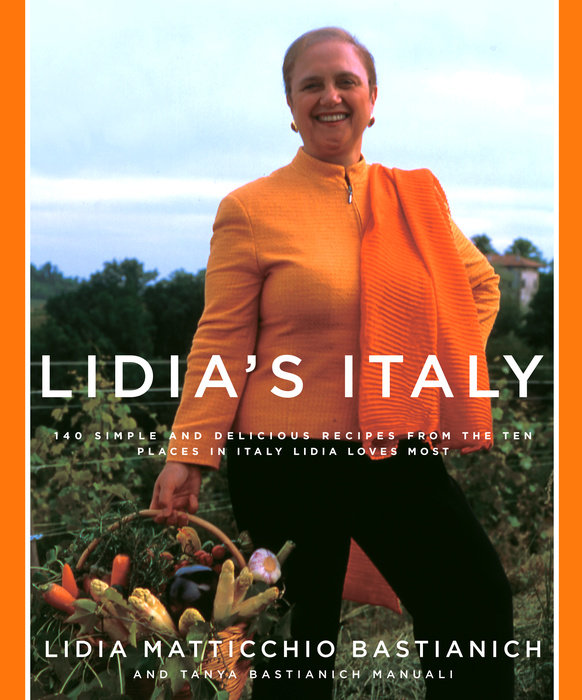6 to 8 cannoli napoleons
Notes
Pasticcerie, pastry shops, also referred to as Catlisch (a name inherited from the Swiss) are a grand tradition in Palermo. The city was greatly influenced by the French and Swiss in their pastry making. When I am in Sicily, cannoli and desserts made with citrus are my favorites. In Palermo I always enjoy desserts and a great cup of espresso at my dear friend’s pastry place Pepino Stancanpiana’s Catlisch.
My Sicilian chef at Felidia, Fortunato Nicotra, makes an elegant version of this Sicily’s favorite dolce with deep-fried disks of cannoli pastry, stacked high with layers of ricotta cream in between. I like to fry squares of pastry in a skillet—no deep fryer needed—and build a crispy, creamy Cannoli Napoleon.
In Sicily, cannoli filling is made with sheep’s milk ricotta which has a distinctive flavor that can’t be matched by ordinary processed ricotta. Fresh cow’s milk ricotta, which is widely available now, is what I use. Be sure to drain it well, sweeten lightly, mix with chopped bitter chocolate, candied orange and toasted almonds—and add a touch of Grand Marnier—for a real Sicilian cannoli.
Ingredients
- For the pastry dough
- 1-1/2 cups all-purpose flour (plus more for rolling)
- 2 tablespoons sugar
- 1/4 teaspoon salt
- 2 tablespoons olive oil
- 1 teaspoon white vinegar
- 1/2 cup dry red wine, or as needed
- For the cannoli cream
- 1 pound (2 cups) fresh ricotta
- 2/3 cup confectioners’ sugar, plus more for decoration
- 1 tablespoon Grand Marnier (optional, but very good!)
- 1 ounce unsweetened chocolate (or 3 tablespoons bittersweet chips)
- 2 tablespoons candied orange rind
- 2 tablespoons toasted almonds
- 1 cup vegetable oil or as needed
Directions
Make the pastry dough in the food processor a day or two in advance—or at least 4 hours—for the best texture. Put the flour, sugar and salt in the bowl and process just to mix. Mix the olive oil, vinegar and the wine together and, with the machine running, pour all but 1 tablespoon in and process for 20 seconds or so until a dough gathers on the blade. If it feels hard and dry, sprinkle in the remaining liquid and process briefly. It should be moist and malleable—incorporate more wine if needed. Turn the dough out of the bowl, scraping any bits from the sides and blade, and knead by hand into a soft, smooth ball. Flatten to a disk, wrap very tightly in plastic, and refrigerate for up to 2 days.
Put the fresh ricotta in a fine-meshed sieve and set inside a bowl to drain for at least 12 hours or a whole day in advance. Cover the ricotta with plastic wrap and refrigerate.
To make the cannoli cream, whip the ricotta with the whisk attachment of an electric mixer until smooth. Whip in the 2/3 cup powdered sugar and the Grand Marnier. Chop the chocolate (or chips) into coarse bits—big enough to bite into and to be visible. Coarsely chop the candied peel and almonds to the same size. Fold the chopped pieces into the cream; refrigerate until you assemble the cannoli.
Cut the pastry dough in half. On a lightly floured surface, roll out one piece of dough to a rectangle, 14 inches by 11 inches (or as close as possible). With a sharp knife and ruler, trim the edges and divide the rectangle into a dozen squares, about 3-1/2 inches on a side. (If you can only get 9 squares of that size or slightly larger, that’s fine!). Set the squares aside, on a lightly floured tray, to rest for 15 minutes before frying. Meanwhile, roll out and divide the remaining half of dough the same way.
To fry the pastry, pour oil into the skillet to a depth of 1/4-inch and set over medium heat. With the point of a small sharp knife, pierce each pastry square about 10 times all over its surface, as though you were making pin pricks through the dough. (These tiny holes will prevent the pastry from ballooning when fried.)
Heat the oil until the edge of a square sizzles gently when dipped into it, then lay in as many squares as you can, 2 inches apart. Raise the heat to keep the oil temperature up (but lower it as soon as the sizzling gets too fast). Fry the squares for about 3 minutes on the first side, pushing them under the oil occasionally to heat the top surface. As the tops begin to bubble, press with tongs to prevent big bubbles from ballooning—small bubbles are OK. When the bottom is golden brown, flip the squares over and fry until evenly colored and crisp on both sides, about 2 minutes.
As soon as they’re done, lift the squares with tongs, let excess oil drip off, and lay them to drain on folded paper towels; flip them over to blot the oil from both sides. Fry all the squares this way, adding oil as needed and heating it between batches.
Assemble your cannoli Napoleons shortly before serving, with 3 nice squares for each. Set one square on the plate, drop about 1-1/2 tablespoons of cannoli cream in the center, lay another square on top—sides aligned—and press gently to spread the cream. Drop on another layer of cream, cover with the third square and press. Finally, shower the top of each Napoleon with powdered sugar (and embellish with drizzles of honey or a sprinkle of finely grated chocolate) and serve.

